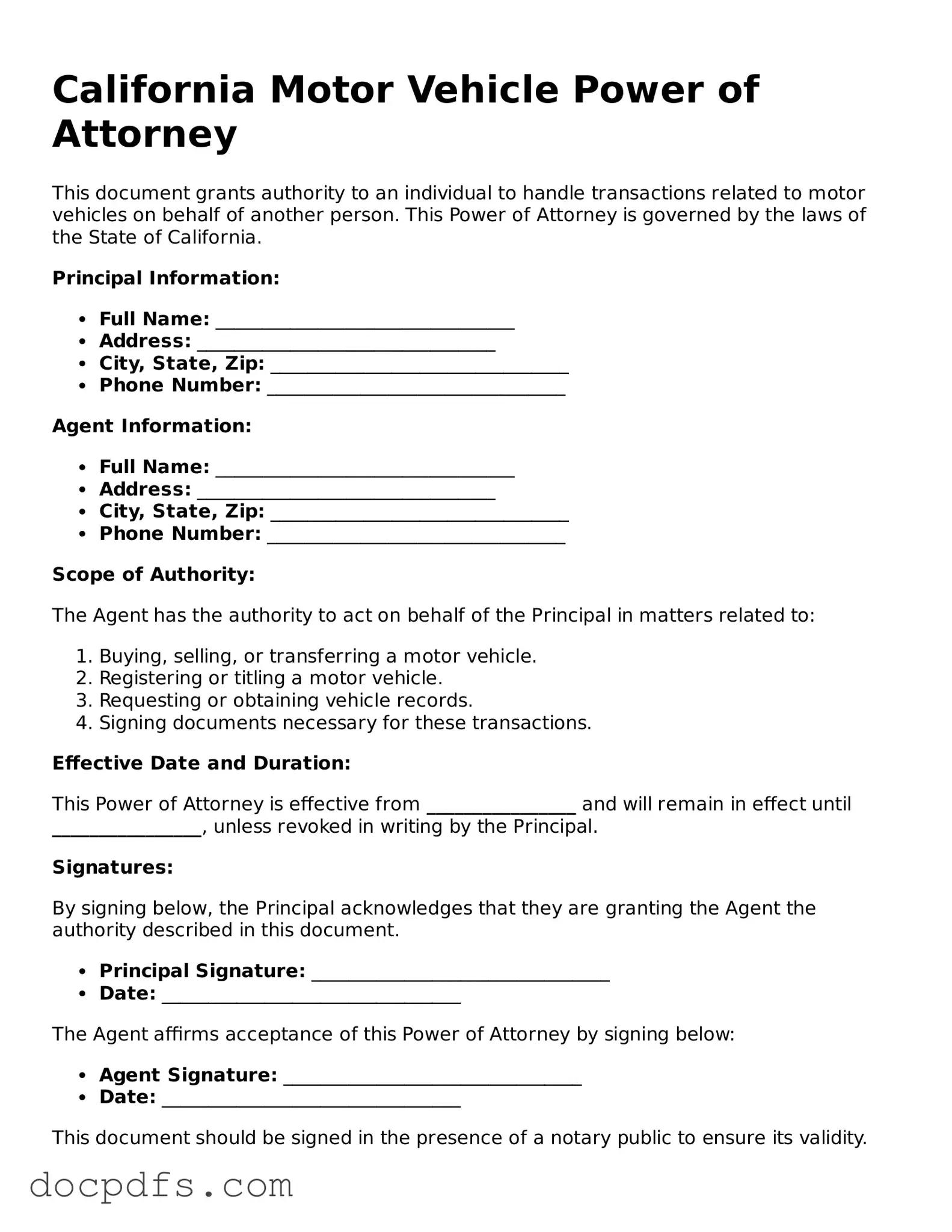The California Motor Vehicle Power of Attorney form is an essential legal document that allows an individual, known as the principal, to designate another person, referred to as the agent, to act on their behalf in matters related to motor vehicles. This form is particularly useful when the principal cannot be present to handle tasks such as transferring ownership, registering a vehicle, or obtaining title documents. By completing this form, the principal grants the agent specific powers, which can be tailored to meet the principal's needs, including the ability to sign documents, pay fees, and interact with the Department of Motor Vehicles (DMV). It is important to ensure that the form is filled out accurately, as improper completion can lead to complications in vehicle transactions. Additionally, the principal should consider the trustworthiness of the agent, as they will have significant authority over the principal's vehicle-related affairs. Understanding the implications of this power of attorney is crucial for anyone looking to delegate responsibilities related to their motor vehicle in California.
